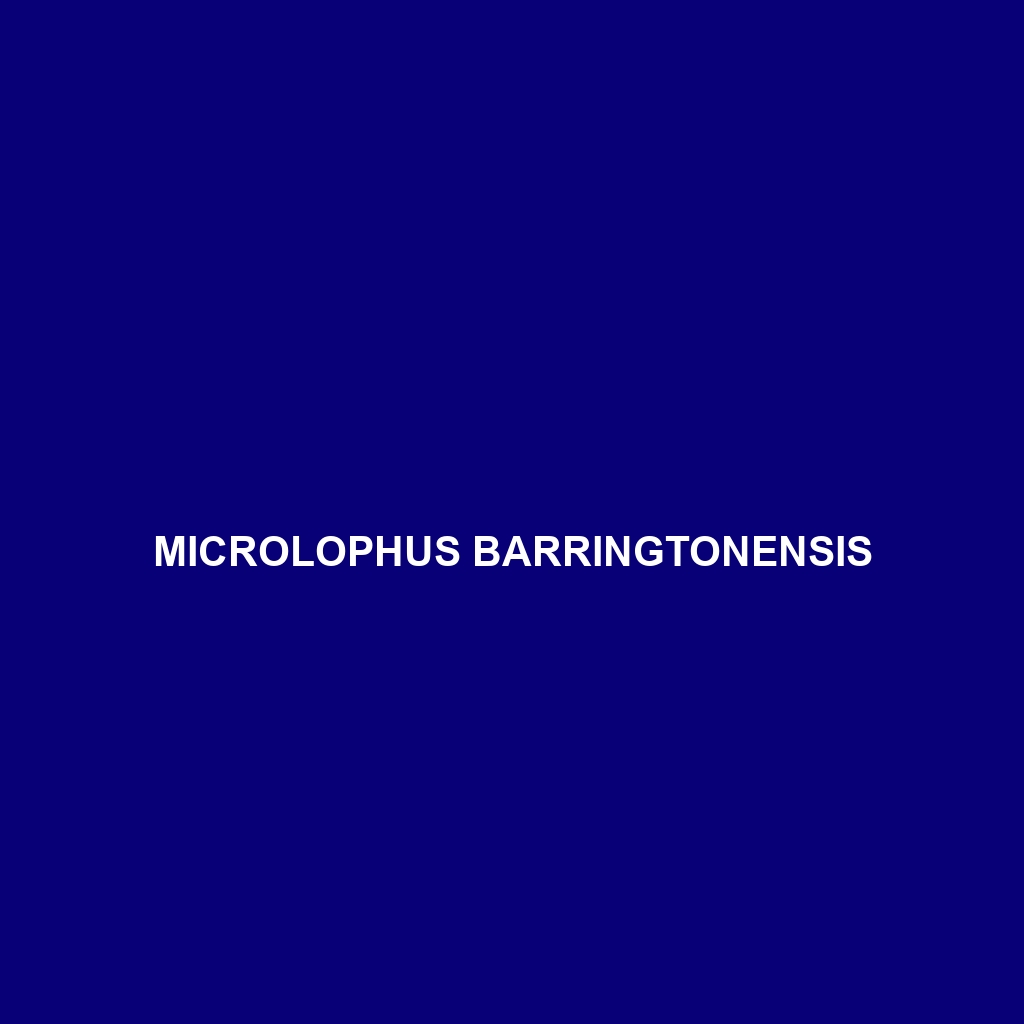Common Name
Microlophus barringtonensis
Scientific Name
Microlophus barringtonensis
Habitat
Microlophus barringtonensis is primarily found in the unique geographical regions of the Galápagos Islands, particularly on Barrington Island. This species thrives in a diverse range of habitats, including dry forests, savannas, and areas near marine habitats. The climate of Barrington Island is classified as subtropical, characterized by warm temperatures and seasonal rainfall. These environments provide a rich diversity of flora, which supports the dietary and reproductive needs of this lizard. The intertidal zones and rocky outcrops found along the coastlines also serve as essential habitats for their daily activities and interactions.
Physical Characteristics
Microlophus barringtonensis exhibits distinctive physical features that make it easily identifiable. This lizard typically reaches a length of approximately 20-25 centimeters (about 8-10 inches). Its body is elongated and slim, adorned with a robust set of limbs that aid in climbing and running. The coloration is quite variable, with individuals often showcasing a range of hues from dark brown to olive green, camouflaging perfectly with their natural surroundings. One of the unique characteristics of this species is its granular, rough texture skin, which aids in moisture retention—a vital adaptation in their semi-arid habitat. Additionally, they possess a distinctive dewlap, which is used in social displays and mating rituals.
Behavior
The behavior of Microlophus barringtonensis is both fascinating and complex. These lizards are diurnal, primarily active during the day when they can be found basking on rocks or moving through the underbrush. They exhibit a variety of social interactions, especially during the mating season. Males are known to display territorial behaviors, showcasing their vibrant dewlaps to attract females while warding off competitors. Although they are not migratory, these lizards exhibit seasonal patterns in activity, becoming more active during the wet season. Social hierarchies can also be observed, where dominant males control the best basking spots and territories.
Diet
Microlophus barringtonensis is classified as an omnivore. This species feeds on a diverse diet that includes insects, plant leaves, and fruits. Common dietary components are grasshoppers, caterpillars, and various fruits that fall to the ground. They employ a foraging strategy that involves actively searching the ground and foliage for food. The lizard’s diet is essential not only for its survival but also for the control of insect populations within its ecosystem. The seasonal availability of specific food types influences their dietary habits and preferences.
Reproduction
Sexual reproduction in Microlophus barringtonensis typically occurs during the warmer months, with a peak mating season between December and March. Males engage in elaborate courtship displays, which include head-bobbing and extending their dewlaps. After successful mating, the female lays a clutch of 1 to 4 eggs in sandy soil or leaf litter, typically around late March. The incubation period lasts approximately 60 days, after which the hatchlings emerge. Parental care ends after hatching, as the young are independent and fully capable of fending for themselves almost immediately.
Conservation Status
The conservation status of Microlophus barringtonensis is currently classified as vulnerable due to its limited range and habitat destruction caused by human activities, such as tourism and land development. The introduction of non-native species poses additional threats, including predation and competition for resources. Conservation efforts are in place to protect their habitat, and awareness programs aim to educate the public about the importance of preserving this unique species and its environment.
Interesting Facts
One of the most intriguing aspects of Microlophus barringtonensis is its extraordinary ability to regulate body temperature through behavioral adaptations, such as changing basking spots throughout the day to optimize sunlight exposure. Additionally, these lizards possess the ability to communicate through body language and color displays, which can be a fascinating subject of study for researchers interested in animal behavior. Their unique adaptations and habits make them a significant subject for ecological and evolutionary research.
Role in Ecosystem
Microlophus barringtonensis plays an integral role in its ecosystem, contributing to the balance of the food web. As both predator and prey, this lizard helps maintain insect populations while serving as a food source for higher trophic levels, such as birds and snakes. Furthermore, their foraging activities assist in seed dispersal, promoting plant growth and biodiversity in their environment. By occupying a crucial niche, Microlophus barringtonensis supports the ecological health and stability of the Galápagos Islands.
